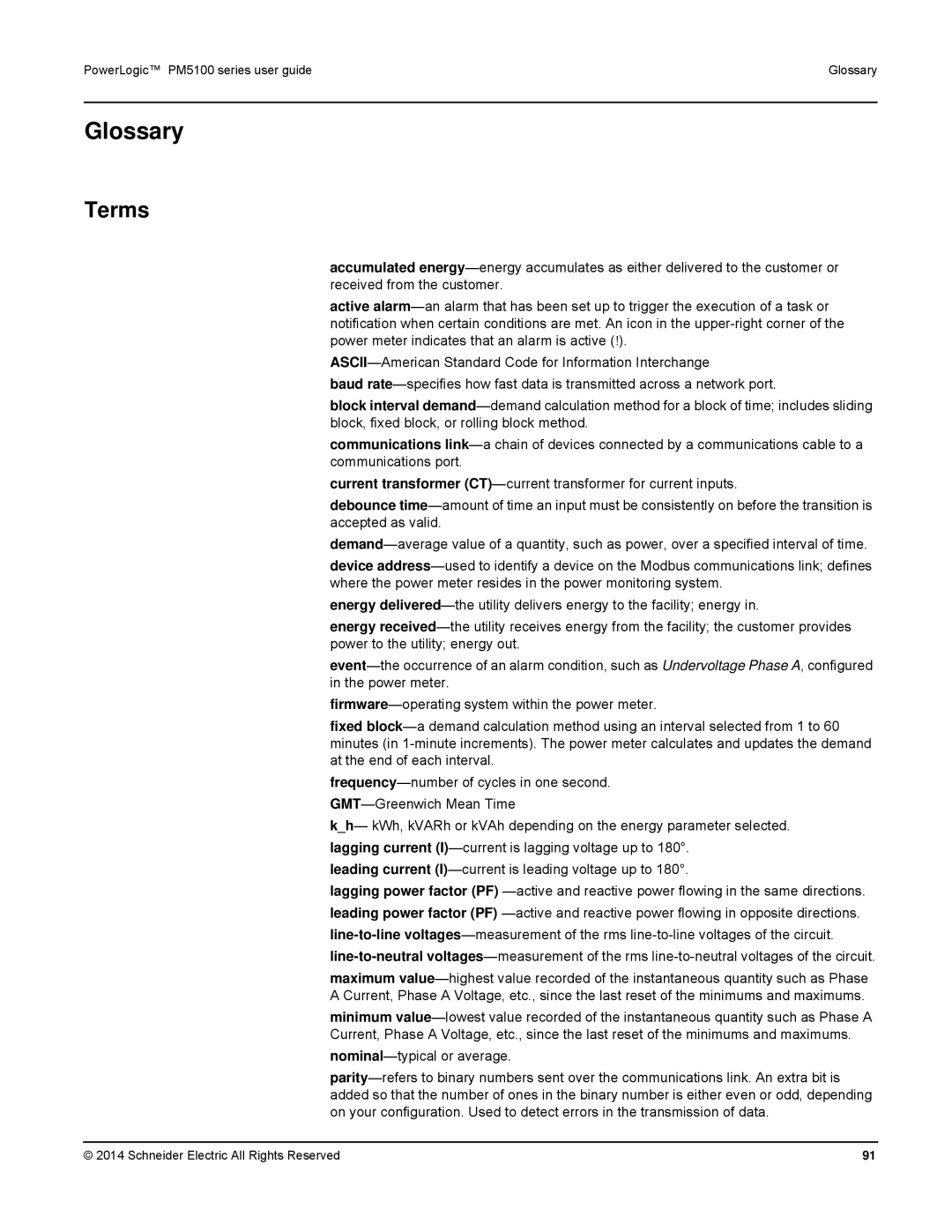PowerLogic™ PM5100 series user guide | Glossary |
Glossary
Terms
accumulated energy—energy accumulates as either delivered to the customer or received from the customer.
active alarm—an alarm that has been set up to trigger the execution of a task or notification when certain conditions are met. An icon in the upper-right corner of the power meter indicates that an alarm is active (!).
ASCII—American Standard Code for Information Interchange
baud rate—specifies how fast data is transmitted across a network port.
block interval demand—demand calculation method for a block of time; includes sliding block, fixed block, or rolling block method.
communications link—a chain of devices connected by a communications cable to a communications port.
current transformer (CT)—current transformer for current inputs.
debounce time—amount of time an input must be consistently on before the transition is accepted as valid.
demand—average value of a quantity, such as power, over a specified interval of time.
device address—used to identify a device on the Modbus communications link; defines where the power meter resides in the power monitoring system.
energy delivered—the utility delivers energy to the facility; energy in.
energy received—the utility receives energy from the facility; the customer provides power to the utility; energy out.
event—the occurrence of an alarm condition, such as Undervoltage Phase A, configured in the power meter.
firmware—operating system within the power meter.
fixed block—a demand calculation method using an interval selected from 1 to 60 minutes (in 1-minute increments). The power meter calculates and updates the demand at the end of each interval.
frequency—number of cycles in one second. GMT—Greenwich Mean Time
k_h— kWh, kVARh or kVAh depending on the energy parameter selected. lagging current (I)—current is lagging voltage up to 180°.
leading current (I)—current is leading voltage up to 180°.
lagging power factor (PF) —active and reactive power flowing in the same directions. leading power factor (PF) —active and reactive power flowing in opposite directions. line-to-linevoltages—measurement of the rms line-to-line voltages of the circuit. line-to-neutralvoltages—measurement of the rms line-to-neutral voltages of the circuit.
maximum value—highest value recorded of the instantaneous quantity such as Phase A Current, Phase A Voltage, etc., since the last reset of the minimums and maximums.
minimum value—lowest value recorded of the instantaneous quantity such as Phase A Current, Phase A Voltage, etc., since the last reset of the minimums and maximums.
nominal—typical or average.
parity—refers to binary numbers sent over the communications link. An extra bit is added so that the number of ones in the binary number is either even or odd, depending on your configuration. Used to detect errors in the transmission of data.

